The snippet as a UX factor for initial user contact
- Snippets are the flagship of your website
- With the right keywords, both search engines and users are addressed
- Positive effects on the rankings of your website
- The snippet is the first point of contact between your website and your user
- That's why title tags and meta descriptions contribute significantly to a positive user experience (UX) during the initial user contact
- The pixel width or number of characters are limited for the title and description
- The following applies to the title: approx. 55 to 60 characters (incl. spaces)
- The following applies to the description: approx. 140 to 156 characters (incl. spaces)
In this article we cover the following topics:
Optimised snippets are an indicator of a successful website. By improving your snippets, you can make a big impact with relatively little effort in 2022. The positioning of keywords in your meta titles and description is still an important ranking factor, which has been confirmed by Google. If you use the right keywords here, this will appeal to both the search engines and your users and have a positive effect on the ranking of your website. A well-considered choice of words is therefore of the utmost importance. In this article we would like to show you how to do it. Have fun reading!
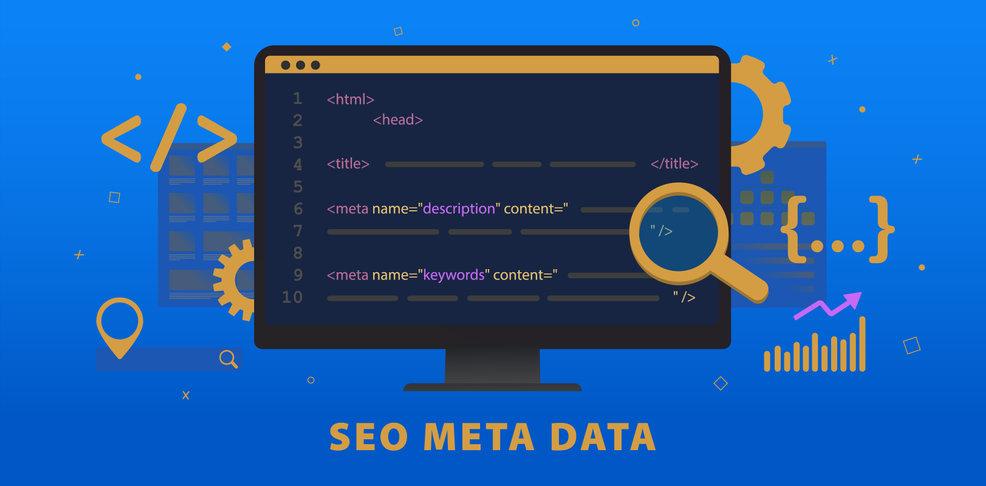
Although the description is not one of the direct ranking factors, it is recommended to improve it. A well-crafted description arouses the interest and curiosity of your visitors and increases the probability that they will click on your search results. This can be described and measured with the click-through rate (CTR). A good click-through rate is a positive user signal. This can also lead to an increase in the ranking if this remains the case over a longer period of time.
Why snippet optimisation is still relevant in 2022: Flagship of your website
In a search query, the snippet is the user's initial point of contact with your website. The snippet therefore offers an ingenious opportunity to get in touch with your users and is therefore an important part of the customer journey. Good search results ensure a good UX right from the start, build trust in your brand and set you apart from the competition.
Optimising snippets ensures that you achieve better rankings and more users come to your website. In addition, the optimisation of search results is easy to implement compared to other SEO measures. You will see that you quickly achieve good results in the form of a better ranking.
The snippet as a UX factor for initial user contact
The snippet is the first point of contact between your website and your user. This is why meta-title tags and meta-descriptions contribute significantly to a positive user experience (UX) during the first user contact. That's why the snippet should give users a simple and realistic picture of what to expect when they search the website or landing page.
At the same time, the snippet should be designed in such a way that it attracts the user's attention and encourages him to click. Basically, you should not make any promises in your snippets that you cannot keep on your page. This can have a negative impact on bounce rates and thus on the ranking of your page in the long term.
The snippet should also contain keywords that relate to the target page. It is important that you not only use the most frequently searched keywords (i.e. the highest search volume), but that you use keywords that reflect the users search intention.
A keyword analysis is very useful before you start improving the snippets. If you plan to optimise search results from several sub-pages at the same time, you should perform a keyword mapping. Make sure that the metadata of each page retains its uniqueness and is not duplicated.
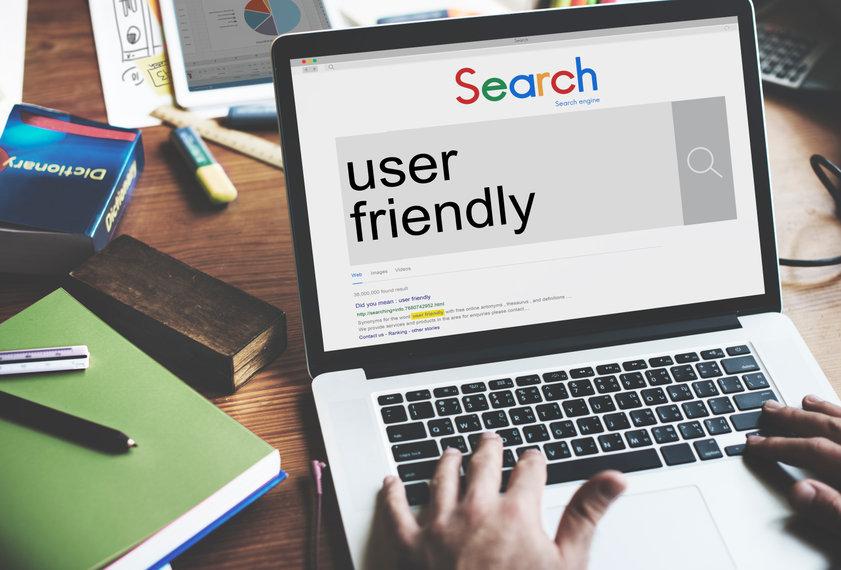
SEO metadata optimisation for more visibility
The customisation of the title and meta description always depends on your website, your product or your service. It is important that you target your customers/users with your website and communicate important content in a consistent style that arouses general interest and specific buying interest. In order to convey a uniform image, it is good to also use the same style when optimising your metadata. Basically, you can orientate on the following model.
The AIDA model
Attention - attract attention
Interest - arouse interest
Desire - trigger desire
Action - get action
If you manage to apply the AIDA principle to improve your metadata and implement the desire for your service or product in your customer, they will click through to your page. This has a positive effect on the click-through rate (CTR) and can also improve your rankings in the long run.
Optimise the title tag or meta title
The title of the snippet is also called the title tag or page title and is one of the meta tags. It should clearly reflect the topic of the website to which it is assigned. Customers must be able to see at a glance what it is about. Make the title informative and meaningful. It must catch the attention of the searchers. Simply listing keywords is bad for click-through rates, rankings and tends to discourage users.
If possible, use coherent sentences in which the focus keyword your page should rank with comes first or at least very early. A company or brand name can also be included in the title, as long as it still has room. Especially with well-known brands, this is a good option to directly inspire trust. For brands that are not yet so well known, mentioning the brand name can help brand building and increase brand awareness. If you have a local website and offer regional services, the location should be displayed in the title. The information that is important depends on the content and search intent that you define for the subpage.
How many characters can the title tag contain?
To display the title in full, it must not exceed a certain pixel width. Since it is relatively difficult to orientate oneself by the key figure "pixel width", you can use 55 to 60 characters, including spaces, as a rough guide. Otherwise take ca. 580px as a guideline. If the title is too long, it will not be displayed completely in the search results (SERPs).
Optimise meta-description or description
An optimised description summarises the content of your page. It also attracts the user's attention and encourages them to click on the search results. It is best to use short and simple sentences that are easy to understand. W-questions are good for arousing the user's interest and encouraging him to click. Questions should then be answered in the content of the landing page. The same applies to calls-to-actions. In the meta description, you can also state the USPs of your brand in order to clearly differentiate yourself from the competition right from the start.
Don't forget the keywords! If a user searches for the content of your page with a certain keyword, but this keyword is not in the description, Google will use any text excerpt from your website in which this keyword occurs. The result does not always match the search intention.
How many characters can I use in the meta description?
Keep it short. The number of characters that appear in the search results is also limited in the description. To ensure that your description is displayed in its entirety, you should limit yourself to 140 to 155 characters or a maximum of 990px .

Attract attention with special characters and emoji 😉
You can use special characters and emojis to draw attention to your search results. The tiny icons arouse emotions and trust and, depending on the topic, have a positive influence on the click-through rate (CTR). This means that users are more likely to feel addressed by your optimised snippet and therefore click on the search result for your page. In addition, special characters and emojis definitely offer a great opportunity to visually stand out from the competition.
Snippet tools - How to optimise your websites metadata
A good snippet is crucial for the success of websites. Since it is the first thing your customer comes into contact with, you can also see it as your signboard. To optimise a snippet and adapt it to the needs of the search engine and your customers, there are some useful tools on the Internet that help you design and improve the meta information and are also free. These snippet generators help you to check how many pixels and characters you still have available to achieve the optimal number.
Such a tool shows how your snippet will appear later. Some tools, like the one from Sistrix, also offer you a list of special characters or emojis that you can use for your description text with a single click. These tools save you a lot of time and make the optimisation of your metadata a breeze. Here we would like to introduce you to three of our favourite tools that save us a lot of work in our daily tasks.
#1 Snippet Tool: The SERP Snippet Generator by Sistrix
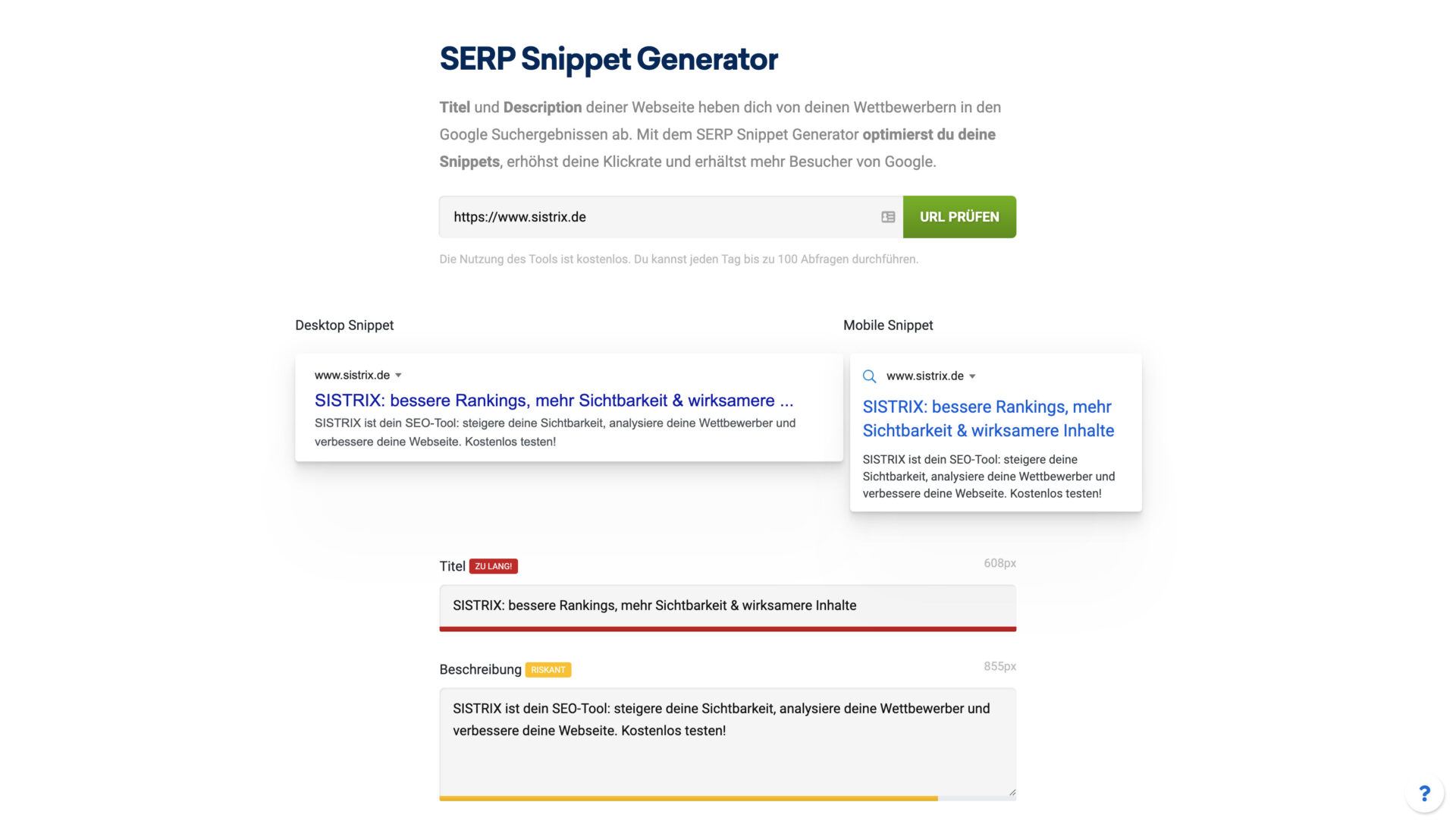
Sistrix is a well-known company in the SEO field. With their free snippet generator, you can run 100 queries per day. The snippet generator is designed to be simple and easy to understand. The basic function is to check the URL and the length of the title and description. Both are displayed in pixels and supported by a colouful bar at the bottom of the input window and comments such as "too long" or "good". This makes it easier for meta newcomers to work with their data. The snippets are directly displayed in the preview.
Special characters, symbols and rich snippets can be found below the input window and can be added with a few clicks. It is also possible to enter keywords and highlight them. As an additional feature, Sistrix also offers to generate a link to the metadata . This is valid for 30 days and is also free of charge. As a nice extension, the tool contains short explanations for a better understanding of the SERPs and links to further blog articles, which make it easier particularly for beginners to better understand the correlations.
Link to the snippet generator: https://app.sistrix.com/de/serp-snippet-generator
#2 Snippet Tool: The SERP Snippet Generator by Seobility
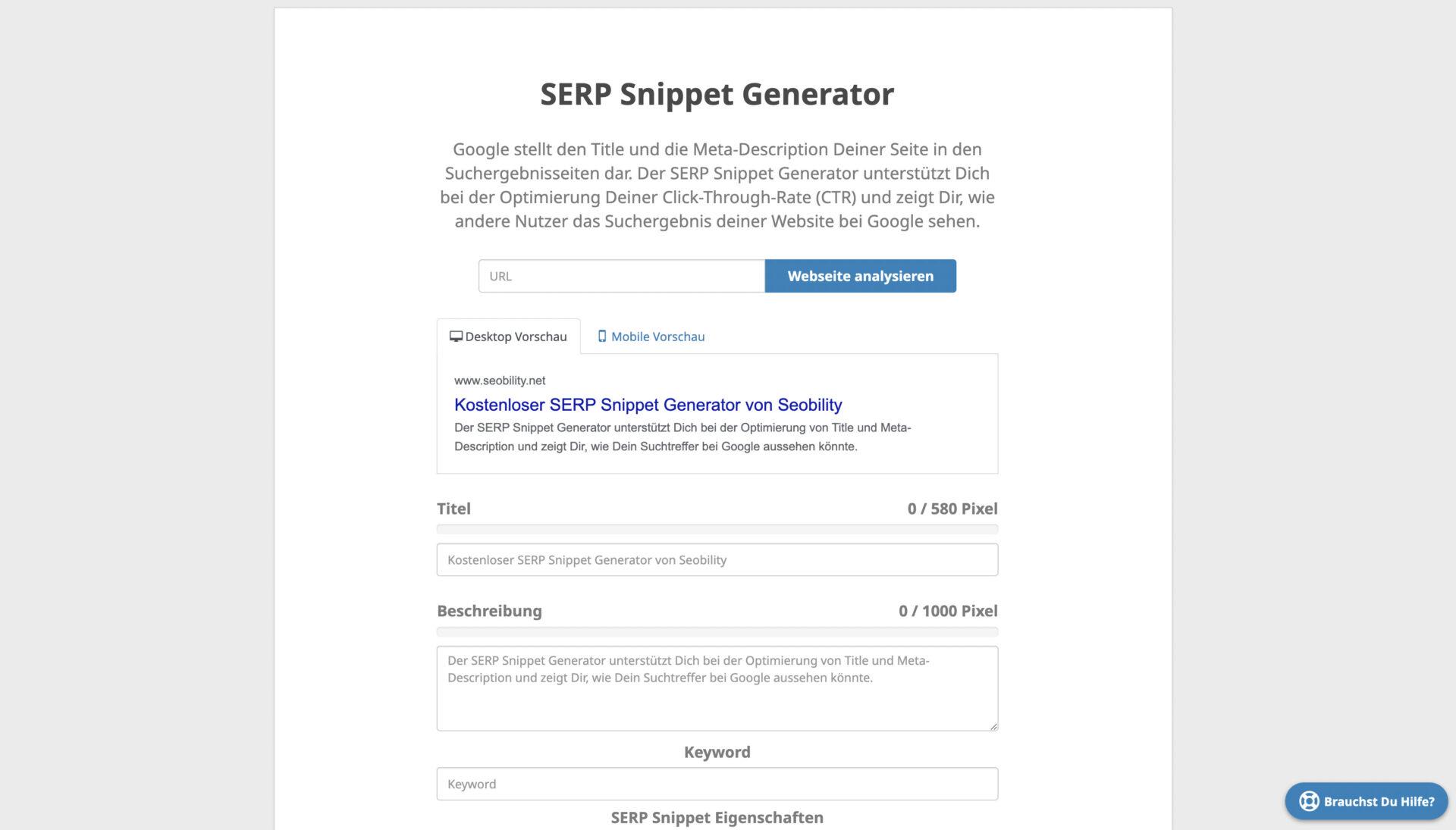
The snippet builder from Seobility has a minimalistic user interface without irritating advertisements. Basic functions can be used free of charge without registration. These include checking the URL and specifying the number of pixels for the title and meta descriptionIn addition, the date can be inserted with one click. The required keywords can be checked directly below. Mobile and desktop previews of generated search results can be viewed immediately and provide a good overview. The aim of the tool, according to the provider, is to improve the click-through rate.
You can register at Seobility free of charge to access the snippet generator in the unlimited basic account and further functions. The focus of the other functions is on the free analysis of up to 1000 URLs. This includes simple error analyses, an on-page and meta analysis for each page and automatic check-ups for keyword optimisation.
Link to the snippet generator: https://www.seobility.net/de/serp-snippet-generator/
#3 Snippet Tool: The SERP Snippet Optimizer by Highervisibility
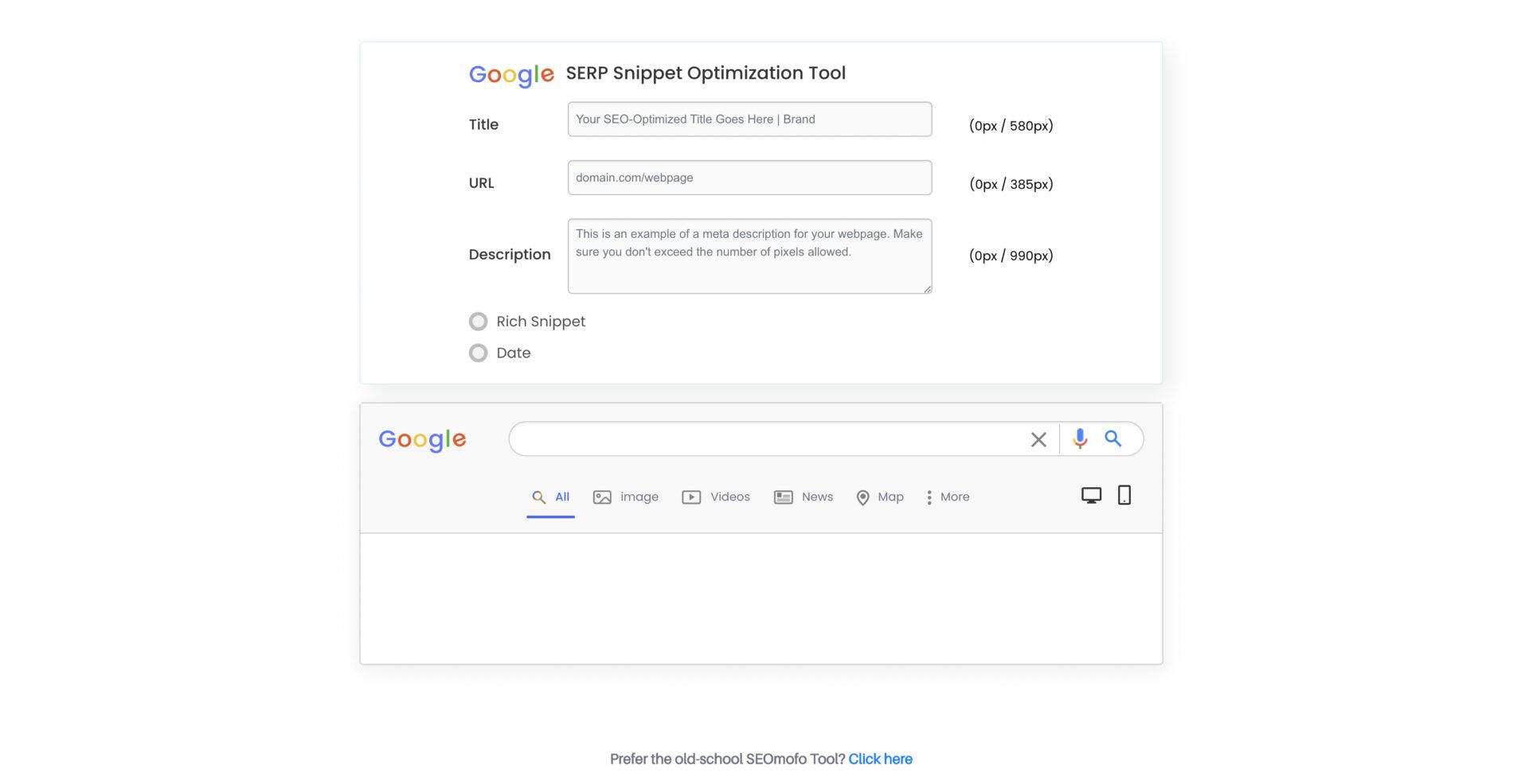
The free snippet generator from Highervisibility is well-organised and has a clear structure. The required parameters for title and description are given in pixels. The snippet generator offers three fields:
The first field is reserved for SEO-optimising titles. Titles up to a generous length of 580 pixels can be generated here.
In the second field, the URL of the web page can be inserted, which can be 385 pixels long.
In the third field, the meta description can be inserted with a maximum length of 990 pixels. The tool also offers the option to display the date below the search results. But not only adding dates expands the possibilities; rich snippets can also be created as an alternative. This gives users more extensive information about the website.
The preview window below the three fields is also helpful. This shows how it would look if you were to enter the corresponding search query in a search engine. All functions of the visual search engine can be used interactively, such as switching to another tab or to images and videos. Another option is the function that allows you to switch between desktop views and smartphone views.
Link to the snippet generator: https://www.highervisibility.com/seo/tools/serp-snippet-optimizer/
FAQs on the topic of snippet optimisation
What is a snippet and its purpose?
A snippet, or more precisely a SERP snippet, is a single search result in a search engine like Google. It usually consists of a URL, a title and a short description. Sometimes it is supplemented by other elements such as rating stars or data. Ideally, the snippet describes what your website is about and gives the user a good and real idea of what to expect on the page. These snippets are generated based on search terms and displayed on the Search Results Page (SERP). It is important that a separate snippet is created for each subpage to be indexed. The same snippet on different URLs can be classified as duplicate content by Google, which in turn results in a drop in your rankings.
What are the three main components in terms of snippet optimisation?
The search result improvement is composed of three elements: The title, also called the title tag or page title, the meta description and the URL. There are ingenious online tools that allow you to check the length of your metadata, highlight keywords and insert symbols.
How many characters as Meta Title?
The art of SERP snippet optimisation lies in making the best use of the available space. Google gives you different amounts of space in desktop and mobile search results. In the mobile version, you always have more characters available than in the desktop version. For the title on the desktop, you can use about 55 to 60 characters or about 580 pixels (including spaces).
How many characters as meta description?
You also have fewer characters available for the description in the desktop version than in the mobile version. In the desktop version, you can orientate on 140 to 155 characters or 980 pixels. It is best to first analyse how your users are more likely to be active: On the desktop or rather mobile.
Why is metadata important?
Metadata is used by the search engine and your users for initial orientation. The search engine uses it to correctly classify your website so that it appears later in the appropriate search queries and fits the search intention of the user. In addition, it is the first point of contact with your customers and thus a very relevant indicator.
How to write good meta data?
For the meta data, it is best to follow the AIDA model: Attention - Interest - Desire - Action. This means: First of all, attract the attention of your users, arouse their interest, e.g. with a W-question, or your product, your service or your brand name. Convert the interest into a desire to buy by setting yourself apart from the competition with your USP. Add a call-to-action that is directed at your customer.
What does click-through rate (CTR) mean?
CTR is short for click-through rate. It is a key figure in online marketing that measures the relationship between the number of impressions and the number of successful clicks. The higher the CTR, the more people visit your website. Good click-through rates can be decisive for your ranking in the long term.
Image sources:
- bestforbest/123rf.com
- rawpixel/123rf.com
- zzzdim/123rf.com
- Sistrix
- Seobility
- Highervisibility.com
About the author: Louisa Anger

Louisa specialises in writing search engine optimised texts and articles in the online marketing field. She researches and writes SEO-optimised content for various companies from different industries. At SEO-Suchhund, Louisa is the person responsible for the topic of SEO content.
